1. Using this Mind Mapping App
1.1. How I created the framework
1.1.1. How I created the content
2. Pattern Recognition
2.1. Systematic Observation
2.1.1. Literature
2.1.1.1. Overviews
2.1.1.1.1. Darst et al (1989)
2.1.1.1.2. Anguera and Mendo (2013)
2.1.1.1.3. Morgan, Muir and Abraham (2014)
2.1.1.2. Sport Specific
2.1.1.2.1. Basketball
2.1.1.2.2. Football
2.1.1.2.3. Rugby Union
2.1.1.2.4. Volleyball
2.1.1.2.5. Baseball
2.1.1.3. Emergence
2.1.1.3.1. Martin and Helmerson (2014)
2.1.1.3.2. Halley et al (2012)
2.1.1.4. Eriksonet al (2011)
2.1.2. Systems
2.1.2.1. CAIS
2.1.2.1.1. Cushion et al (2012)
2.1.2.2. GSEQ-SDIS
2.1.2.2.1. Sarmento et al (2014)
2.1.2.2.2. Lapresa et al (2013)
2.1.2.3. SOF-CODER
2.1.2.3.1. Jonsson et al (2006)
2.1.2.4. THEME
2.1.2.4.1. Borrie, Jonsson and Magnusson (2002)
2.1.2.4.2. Jonsson et al (2014)
2.1.2.5. ASUOI
2.1.2.5.1. Potrac, Jones and Cushion (2007)
2.1.2.5.2. Becker and Wrisberg (2008)
2.1.2.6. SSG
2.1.2.6.1. Turnnidge et al (2014)
2.1.2.7. CAI
2.1.2.7.1. More and Franks (1996)
2.1.2.8. ALT-PE
2.1.2.8.1. Silverman, Devillier and ramirez (1991)
2.1.2.9. StatDNA
2.1.2.9.1. Arsenal
2.1.2.10. SAP
2.1.2.10.1. SAP and Bayern Munich
2.1.2.10.2. Mobile Geeks
2.1.2.10.3. DFB and SAP
2.1.2.10.4. Tennis
2.1.2.10.5. Tennis 2012
2.1.2.10.6. HANA
2.1.2.10.7. Tennis (2014)
2.1.2.10.8. Bayern Munich
2.1.2.11. Microsoft
2.1.2.12. SAS
2.1.2.12.1. Rowing (2014)
2.1.2.13. IBM
2.1.2.14. Sportradar
2.1.2.15. Hudl
2.1.2.16. Performance Innovations
2.1.3. Other Examples
2.1.3.1. Running Analysis
2.1.3.1.1. Noraxon
2.2. Machine Learning
2.2.1. Supervised Learning
2.2.1.1. Roland Goecke
2.2.1.1.1. Introduction to Pattern Recognition (1)
2.2.1.1.2. Introduction to Pattern Recognition (2)
2.2.1.1.3. Jason Corso
2.2.1.1.4. Neural Nets
2.2.1.2. Data and Databases
2.2.1.2.1. Examples
2.2.1.3. Methods
2.2.1.3.1. Stanford Machine Learning
2.2.1.3.2. Pattern Classification (2001)
2.2.1.4. Test Data
2.2.1.4.1. Neural Network
2.2.2. Prediction
2.2.3. Classification
2.2.4. Literature
2.2.4.1. Christopher Bishop (2006)
2.2.4.1.1. Introduction
2.2.4.1.2. Probability Distributions
2.2.4.1.3. Linear Models for Regression
2.2.4.1.4. Graphical Models
2.2.4.2. Iain Murray (2010)
2.2.4.3. Graham Williams (2011)
2.2.4.4. John Quinn (2011)
2.2.4.5. Manuel Fernandez-Delgado et al (2014)
2.2.4.6. Deep Learning
2.2.4.6.1. Lin et al (2014)
2.2.4.6.2. Wikipedia
2.2.5. Data Science
2.2.5.1. Coursera
2.2.6. Stephen Pettigrew's R Tutorials
2.2.6.1. Other R Resources
2.2.7. R Resources
2.3. Making Sense of Data: Big Pictures, Small Pieces
2.3.1. Expert Systems
2.3.2. Phenomenography
2.3.2.1. Ference Marton (1981)
2.3.2.2. Bill and Phenomenography (2014)
2.3.3. Ecologies and Dynamic Systems
2.3.3.1. Ecologies of Performance (2014)
2.3.3.2. Advances from an Ecological Dynamics approach (2013)
2.3.3.3. Headrick et al (2011)
2.3.4. John Snow
2.3.4.1. Wilson (2013)
2.3.4.1.1. Robin Wilson
2.3.5. Google Flu
2.3.5.1. Kent Anderson (2014)
2.3.5.2. Lazer, Kennedy and Vespignani (2014)
2.3.6. International Association for Pattern Recognition
2.3.7. John Wilkins (2013)
2.3.7.1. The Nature of Classification (2013)
2.3.8. Big Data
2.3.8.1. Real Time Issues
2.3.8.2. Jennifer Ouellette (2013)
2.3.8.3. Adam Tanner (2014)
2.3.9. Greg Muender (2014)
2.3.10. Yoon et al (2012)
2.3.10.1. Guenther and Bradley (2013)
2.3.10.1.1. PhD
2.3.10.2. Giot and Cherrier (2014)
2.3.11. Iterative algorithms (2014)
2.3.12. Lucey et al (2015)

